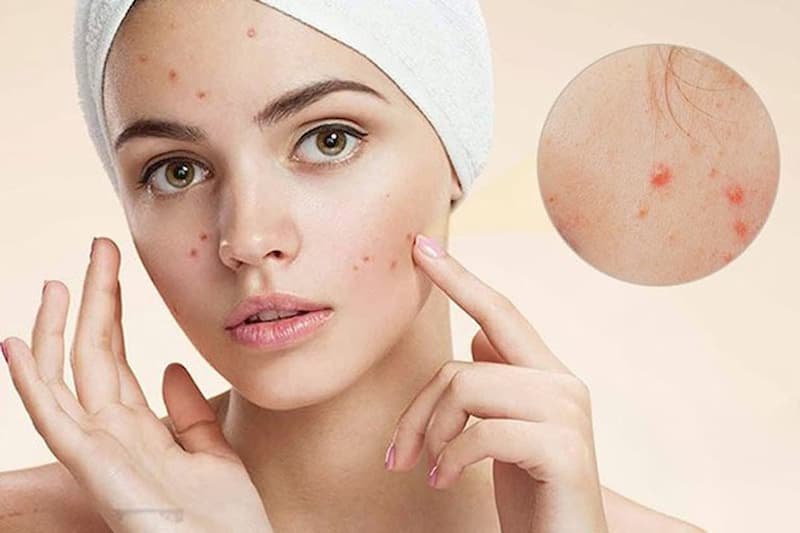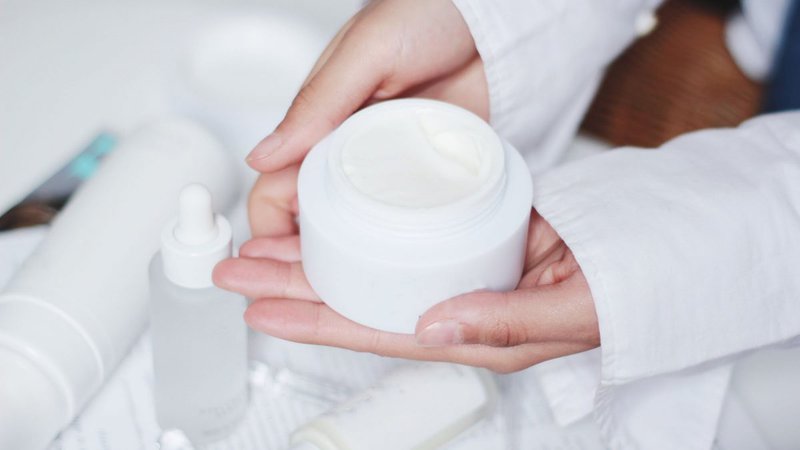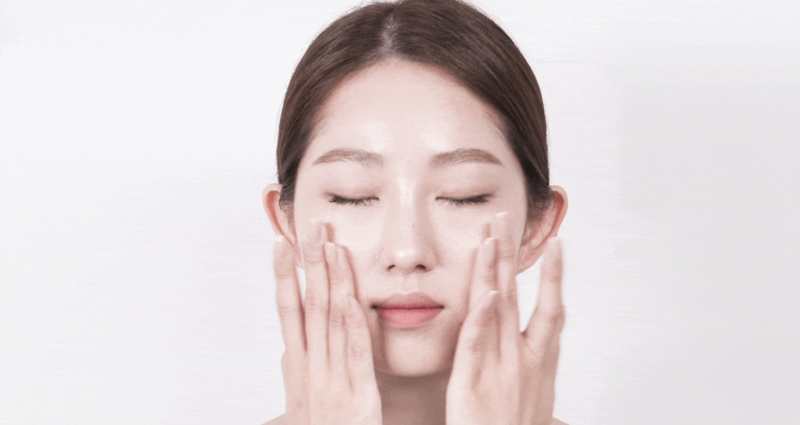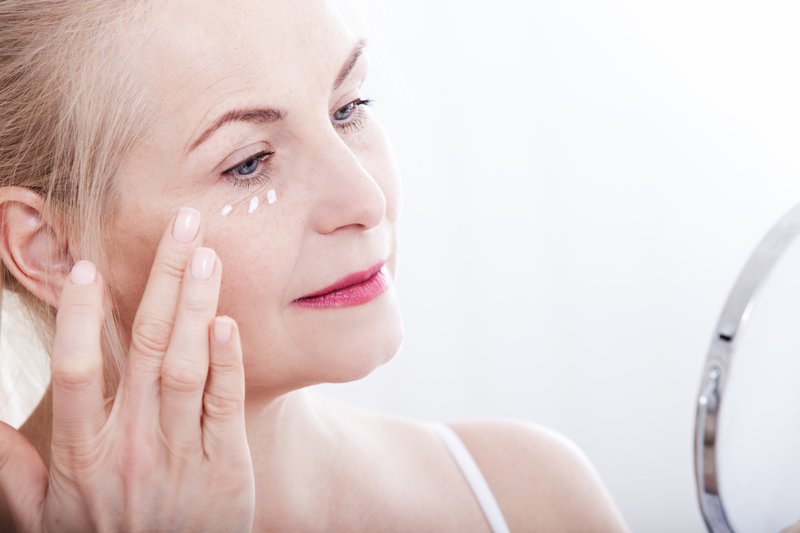Vitamin C in Dermatology
This is an automatically translated article.
Besides the good effects of vitamin C such as strengthening immunity, preventing infections, good for eyes, ... vitamin C also brings benefits to the skin such as: Preventing wrinkles, exfoliating, treating dark spots, whitening,...
1. What is Vitamin C?
Vitamin C is one of the natural antioxidants. Most plants and animals can synthesize vitamin C from glucose on their own, however, humans and some vertebrates lack the enzyme L-glucono-gamma lactone oxidase and cannot synthesize vitamin C on their own. Therefore, we must obtain vitamin C from natural sources such as citrus fruits, green leafy vegetables, berries, papaya and broccoli. Back in history, foods high in vitamin C like lemons were carried by sailors on long voyages to prevent scurvy, which causes bleeding gums. In 1937, the Nobel Prize was awarded to Doctor Albert Szent Goyrgi for his success in molecularly isolating vitamin C from red bell peppers and determining the role of vitamin C in scurvy.
Absorption of vitamin C in the gastrointestinal tract is limited by active transport, and therefore only a finite amount of vitamin C is absorbed despite high intakes. Moreover, the bioavailability of the vitamin in the skin is not significant when taken orally, so the application of topical ascorbic acid is preferred by dermatology.
2. The mechanism of action of vitamin C
2.1. Vitamin C - Antioxidant
Vitamin C is the most abundant antioxidant in human skin, forming part of a complex group of antioxidants with and without enzymatic nature, which coexist to protect the skin against free radicals. do. As a water-soluble vitamin, vitamin C works in the water compartments of cells. When the skin is exposed to UV rays, free radicals such as superoxide ions, peroxide and single oxygen are generated, at this time, vitamin C protects the skin against oxidative stress by sequentially donating cells electrons to neutralize free radicals. UV exposure reduces the presence of vitamin C in the skin.

Vitamin C là chất chống oxy hóa dồi dào
2.2. UV rays, free radicals and skin damage – Vitamin C and photoprotection
As mentioned, UV exposure produces free radicals. These radicals initiate chain or cascade reactions that destroy cells. The deleterious effects of free radicals lie in the direct chemical modification of cellular DNA, cell membranes and cellular proteins, including collagen.
Antioxidants needed to neutralize free radicals from UV rays. It's important to remember that vitamin C works against both UVB and UVA rays, and small amounts of repeated UVA rays penetrate the dermis 30-40 times deeper than UVB rays, which mainly affect only the upper layers. envelope. UVA causes mutation and destruction of collagen, elastin, proteoglycan and other skin cell structures. Therefore, UVA rays cause skin aging and melanin formation. UVB causes sunburn, free radicals, epidermal mutations, and skin cancer.
Although vitamin C alone provides photoprotection, it works best when combined with vitamin E, which enhances vitamin C's activity by a factor of four. The hydrophilic vitamin C helps to regenerate the lipophilic vitamin E. Thus, vitamins C and E together protect the cell's hydrophilic and lipophilic compartments, respectively, synergistically limiting chronic UV damage by significantly reducing including cell death and thymine dimer formation.
The combination of 0.5% ferulic acid (a powerful antioxidant of plant origin) with 15% vitamin C and 1% vitamin E can increase the effectiveness of vitamin C eight times. Please note that this triple combination is useful for reducing acute and chronic photodamage, and may be applicable for future skin cancer prevention.
2.3. Vitamin C and collagen synthesis
Vitamin C is essential for collagen biosynthesis. Vitamin C has been shown to influence quantitative collagen synthesis, in addition to stimulating qualitative changes in collagen molecules. Vitamin C serves as a co-factor for the enzymes prolysyl and lysyl hydroxylase, which are responsible for stabilizing and cross-linking collagen molecules. Another mechanism for the effect of vitamin C on collagen synthesis is the stimulation of lipid peroxidation, resulting in the production of malondialdehyde, which stimulates collagen gene expression. Vitamin C also directly activates collagen synthesis transcription and stabilizes procollagen mRNA, thereby regulating collagen synthesis. Signs and symptoms of Scurvy – a vitamin C deficiency disease – are caused by impaired collagen synthesis. Clinical studies have shown that the use of vitamin C increases collagen production in the skin of young as well as old people.
2.4. Vitamin C - Melanin removal agent
When selecting a depigmentation agent, it is important to distinguish between a cytotoxic agent and a substance that disrupts the main steps of pigment formation. Vitamin C belongs to the latter category. Vitamin C interacts with copper ions at the active site of tyrosinase and inhibits tyrosinase enzyme activity, thereby reducing melanin formation. Vitamin C also acts on photofollicular pigmentation. However, vitamin C is a volatile compound. Therefore, it is often combined with other depigmentation agents for better effect.
2.5. Vitamin C - Anti-Inflammatory Agent
As noted earlier, vitamin C inhibits NFkB- which is the trigger for several pro-inflammatory cytokines such as TNF-alfa, IL1, IL6 and IL8. So vitamin C has potential anti-inflammatory activity and can be used in conditions like acne and rosacea. It can promote wound healing and prevent post-inflammatory hyperpigmentation.

Vitamin C có thể sử dụng trong tình trạng mụn trứng cá
3. Topical Vitamin C Formula
Vitamin C is commercially available in many forms such as creams, serums and transdermal patches. Of these, only serums contain active vitamin C in its nearly colorless form. It is unstable and when exposed to light oxidizes to Dehydro Ascorbic Acid (DHAA), giving it a yellow color. The stability of vitamin C is controlled by maintaining a pH less than 3.5. At this pH, the ionic charge on the molecule is removed and can be well absorbed through the stratum corneum
From a clinical perspective, it is important to note that the effectiveness of the vitamin C serum is directly proportional to the concentration, but only 20% max. The half-life in the skin after reaching maximum concentrations is 4 days. A continuous supply of vitamin C is needed to achieve adequate photoprotection and can be achieved by applying vitamin C every 8 hours. Because UV rays reduce vitamin C levels in tissues, it is best to apply vitamin C after rather than before UV exposure. The combination of tyrosine, zinc, and vitamin C has been shown to increase the bioavailability of vitamin C by 20 times compared with vitamin C alone.
4. Undesirable effects of vitamin C applied directly
Topical vitamin C is largely safe for long-term daily use, can be safely combined with other common topical anti-aging agents such as sunscreen, tretinoin, antioxidants other and alpha hydroxy acids such as glycolic acid. Some mild side effects include yellow discoloration, hypopigmentation of hair, and yellowing of clothes, due to the oxidation of vitamin C. Once vitamin C is applied, it cannot be completely washed or wiped off. . Reactions such as stinging, erythema, and dryness have been reported rarely after topical application of vitamin C, but can be treated with moisturizer. Care should be taken when applying vitamin C around the eyes.
Urticaria and erythema multiforme due to topical use of vitamin C have been reported. The toxic dose of vitamin C that induces cell apoptosis under laboratory conditions is 100-200 times higher than the recommended daily dose, making vitamin C recognized as highly safe.
To sum up, vitamin C is a well-regarded natural medicine with many effects. With a high level of safety, vitamin C is increasingly asserting its position in the ability to resist photodamage, hyperpigmentation, tissue inflammation and promote tissue healing. Studies are underway to improve its ability to penetrate the dermis to stimulate collagen production and scavenge free radicals. Therefore, vitamin C holds promise to become a mainstream drug in future dermatological practice.
Urticaria and erythema multiforme due to topical use of vitamin C have been reported. The toxic dose of vitamin C that induces cell apoptosis under laboratory conditions is 100-200 times higher than the recommended daily dose, making vitamin C recognized as highly safe.
To sum up, vitamin C is a well-regarded natural medicine with many effects. With a high level of safety, vitamin C is increasingly asserting its position in the ability to resist photodamage, hyperpigmentation, tissue inflammation and promote tissue healing. Studies are underway to improve its ability to penetrate the dermis to stimulate collagen production and scavenge free radicals. Therefore, vitamin C holds promise to become a mainstream drug in future dermatological practice.
Please dial HOTLINE for more information or register for an appointment HERE. Download MyVinmec app to make appointments faster and to manage your bookings easily.
References: ncbi.nlm.nih.gov, byrdie.com
This article is written for readers from Sài Gòn, Hà Nội, Hồ Chí Minh, Phú Quốc, Nha Trang, Hạ Long, Hải Phòng, Đà Nẵng.





